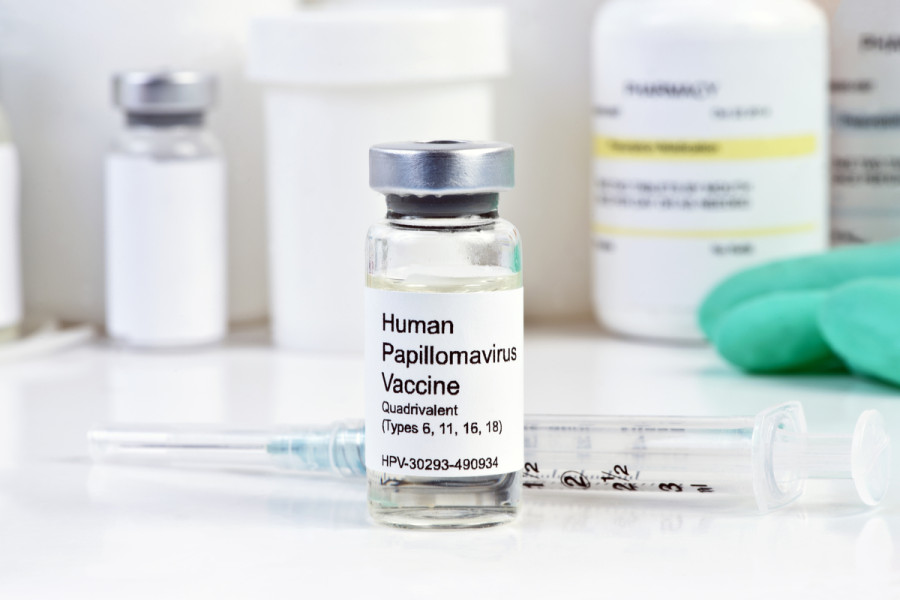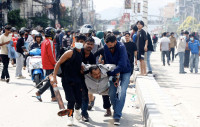Columns
Cervical cancer is avoidable
If diagnosed early, it is one of the most preventable and treatable forms of cancer.
Dr Kishor Adhikari
Cervical cancer is an abnormal and excessive growth of tissue of the cervix, a part of the female reproductive system connecting the uterus with the vagina. This form of cancer results from cell mutation where altered cells grow and multiply out of control, and they don't die. Cancer cells invade nearby tissues and can break away from a tumour to spread elsewhere in the body. Almost all cervical cancers are a result of infection by the human papillomavirus (HPV), a very common virus transmitted through sexual intercourse. Once diagnosed, surgical intervention is the mainstay of treatment. However, combined radiotherapy and chemotherapy is also an effective alternative.
Cervical carcinoma is one of the most prevalent cancers among women. It is the fourth most common carcinoma worldwide, and the second most common for women aged 15 to 44 years. About 85 percent of the incidents and cervical cancer deaths occur in low and middle-income countries, where the death rate is 18 times higher than in the developed countries. Cervical cancer ranks as the leading cause of female cancer in Nepal with 3,504 new cases and 1,872 deaths each year, as per government statistics.
National guideline
In 2010, with the aim of reducing the incidence of cervical carcinoma, the Nepal government formulated a national guideline for screening and preventing cervical cancer. Although this guideline calls for screening at least 50 percent of the women aged 30-60 years and reducing the mortality rate by 10 percent in this age group every five years, cases of cervical cancer were reported constantly between 2012 and 2017, according to the research findings of BP Koirala Memorial Cancer Hospital, Chitwan. With comprehensive and strategic approaches, cervical cancer can be eliminated within a few generations. If diagnosed early and managed effectively, cervical cancer is one of the most preventable and treatable forms of cancer.
There are various ways of screening for cervical cancer such as Pap smear, visual inspection with acetic acid and HPV testing. The cervical screening programme is the most widely used method where a few cells from the cervix are scraped off using a cervical brush and sent for microscopic examination to rule out cervical cancer or any initial alterations that may lead to cervical cancer. Women need to start their regular cervical cancer screening test after their first sexual contact or after reaching 21 years age, and it should be repeated every three years.
Pap smear screening has been reported to be a cost-effective method for detecting early cervical cancer, however, its feasibility is still questioned due to a shortage of human resources, necessary infrastructure and financial resources to run the programme. The coverage rate of the screening programme in Nepal is below 3 percent. Ethical concerns over informed consent, client privacy and their perceived fear about the harmful effects of screening are the reasons for this low coverage. To overcome such barriers, we mostly focus on the visual inspection with acetic acid technique as it is the most convenient, affordable and accurate one. Another sensible alternative for screening in Nepali society can be self-collection HPV testing since ‘shame and fear’ is a major hurdle. In this technique, women do not have to expose their private parts to healthcare workers as they can collect the swab themselves with minimal instruction.
The HPV vaccine is another proven strategy being widely used in many countries globally for preventing cervical cancer. These vaccines are very effective if given before the women become sexually active. Vaccination can also be given to sexually active individuals and in spite of an abnormal Pap smear test. This vaccine has great public health benefits and it has greatly reduced cases of cervical cancer in the developed countries. However, in a developing country like Nepal, the use of the HPV vaccine is very rare. Different international organisations are providing HPV vaccination aid in Nepal but on a very small scale. A very high cost and little public awareness are the key obstacles to a successful implementation of the vaccination programme in Nepal.
Public awareness
Despite the efforts of the government, the prevalence of cervical carcinoma has not dropped so far. There are numerous modifiable risk factors and preventive measures like behaviour modification, condom use, vaccination, early screening and intervention. Raising awareness among the people about the aforementioned measures is of paramount importance to combat the disease and reduce morbidity and mortality. Using mass media, school and college-level curricular modifications with more content related to cervical screening and HPV vaccination, and capacity development programmes targeted at local level health service providers are some of the crucial steps that need to be taken. A creatively tailored ‘public awareness’ programme is an urgent need to address misconceptions. If not given urgent priority to spread public awareness in Nepal, cervical cancer may become one of the major hurdles to achieve the promised Universal Health Coverage by the year 2030.
Health programmes directed at cervical cancer should be based on adequate evidence. Due to the lack of scientific research on the epidemiology of cervical cancer, there is always a problem in evidence-based health planning and programmes. A series of exploratory investigations should be done to pinpoint the existing barriers in the early phase so that necessary steps can be taken to address them. Deeply-rooted gender norms have been evident as a great impediment to cervical screening programmes, hence, health programmes should be constructed by thinking outside the box. We must utilise the opportunity provided by the recently established federalism that offers a high level of decentralisation for encapsulating local needs and expectations through research.




 9.12°C Kathmandu
9.12°C Kathmandu















